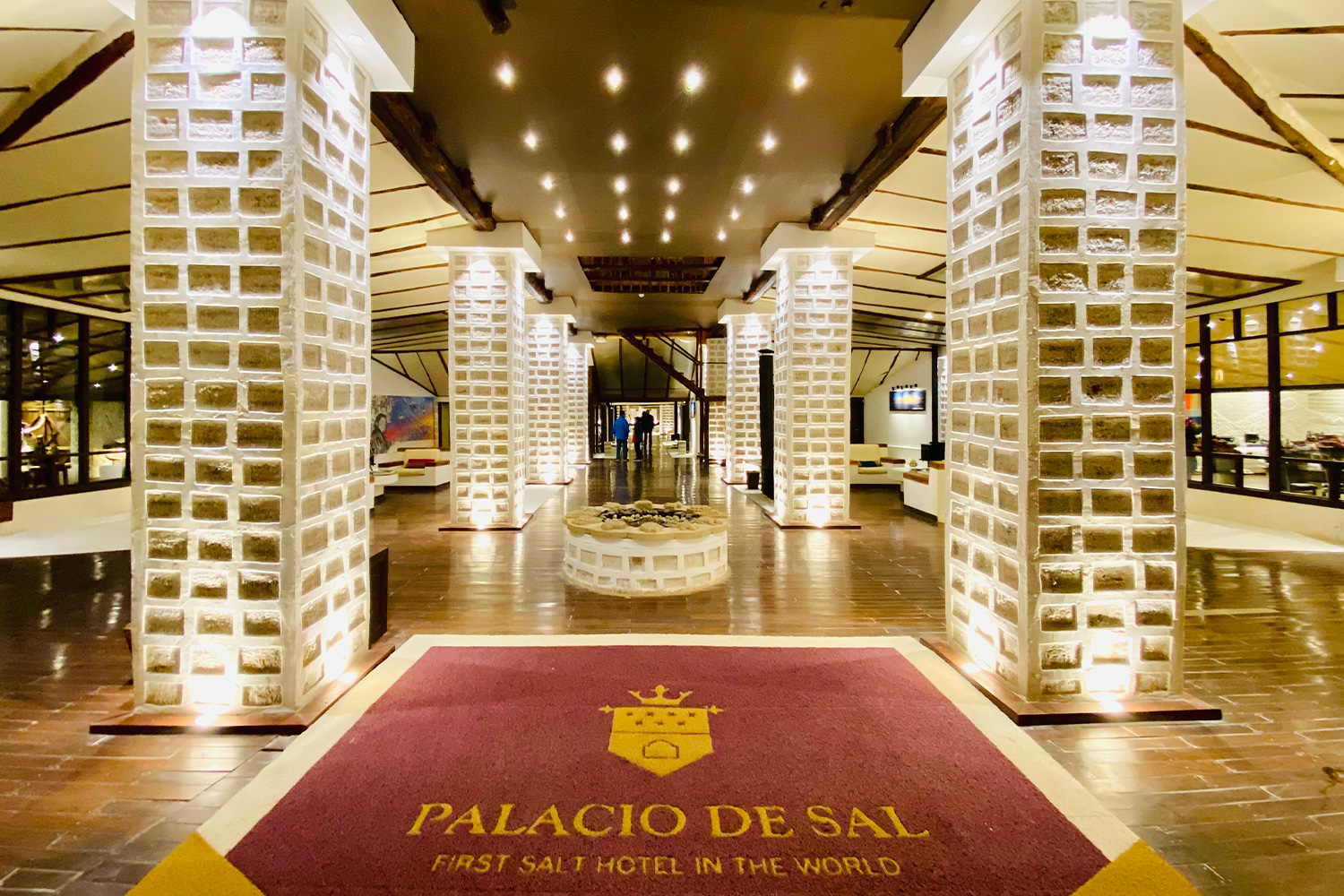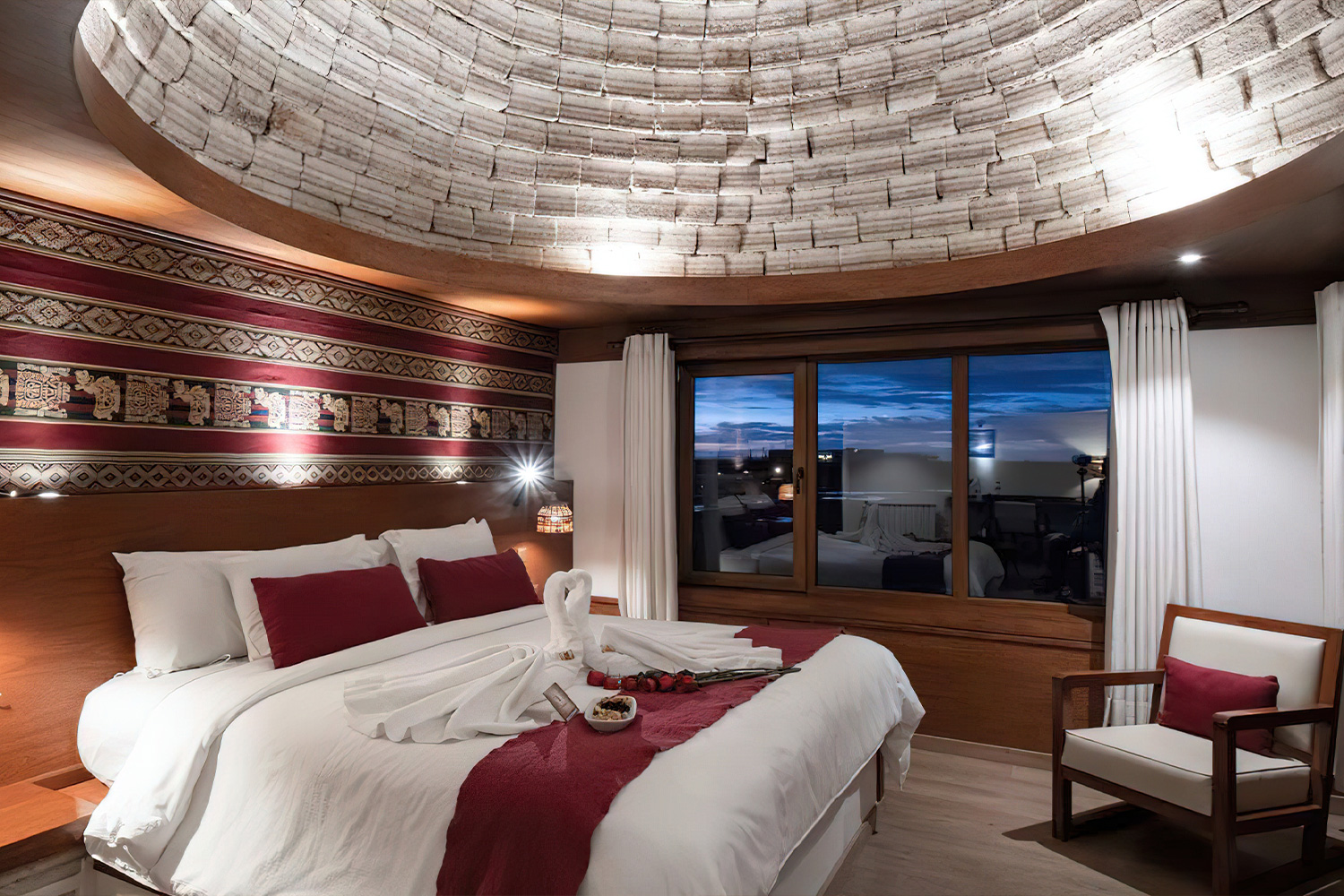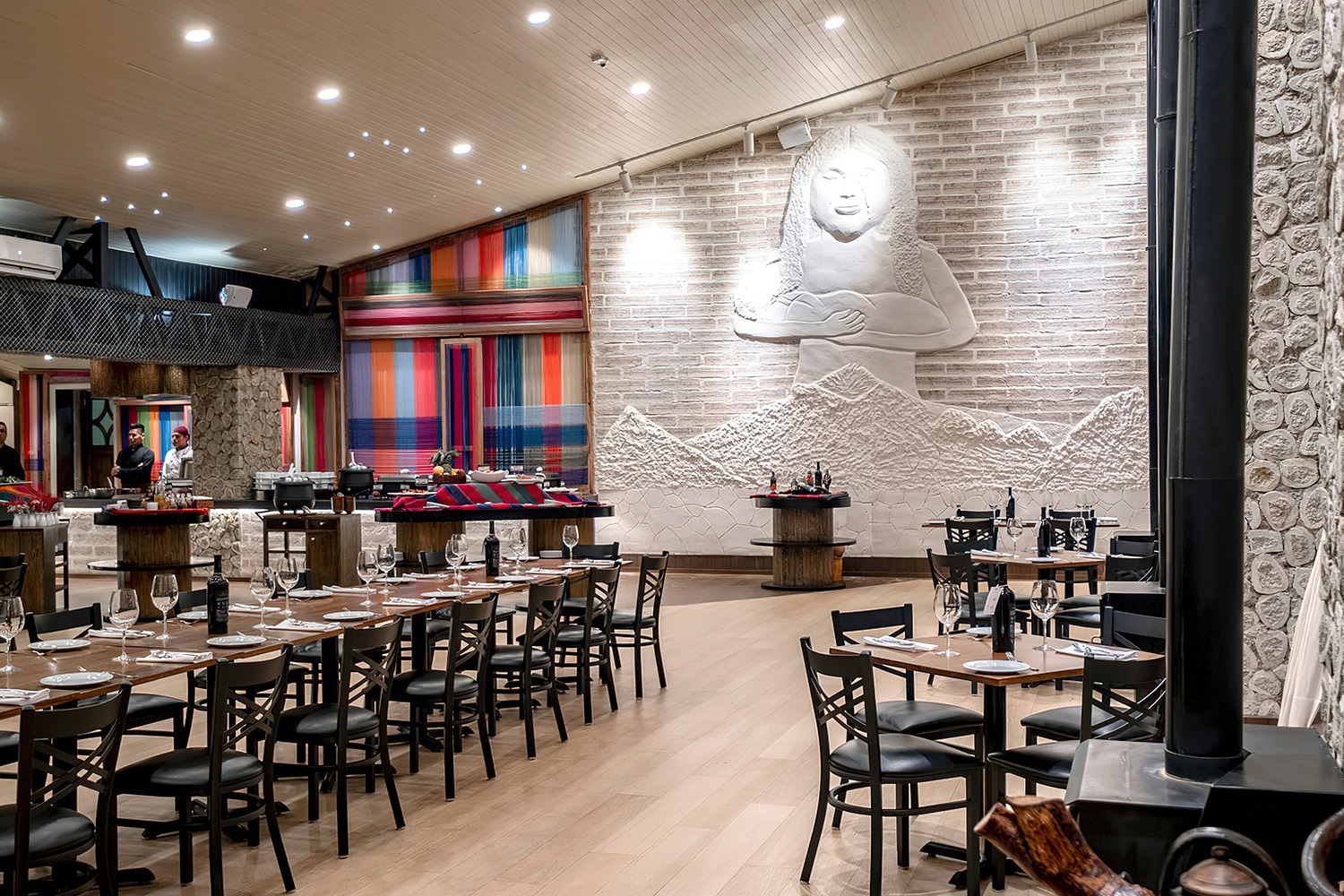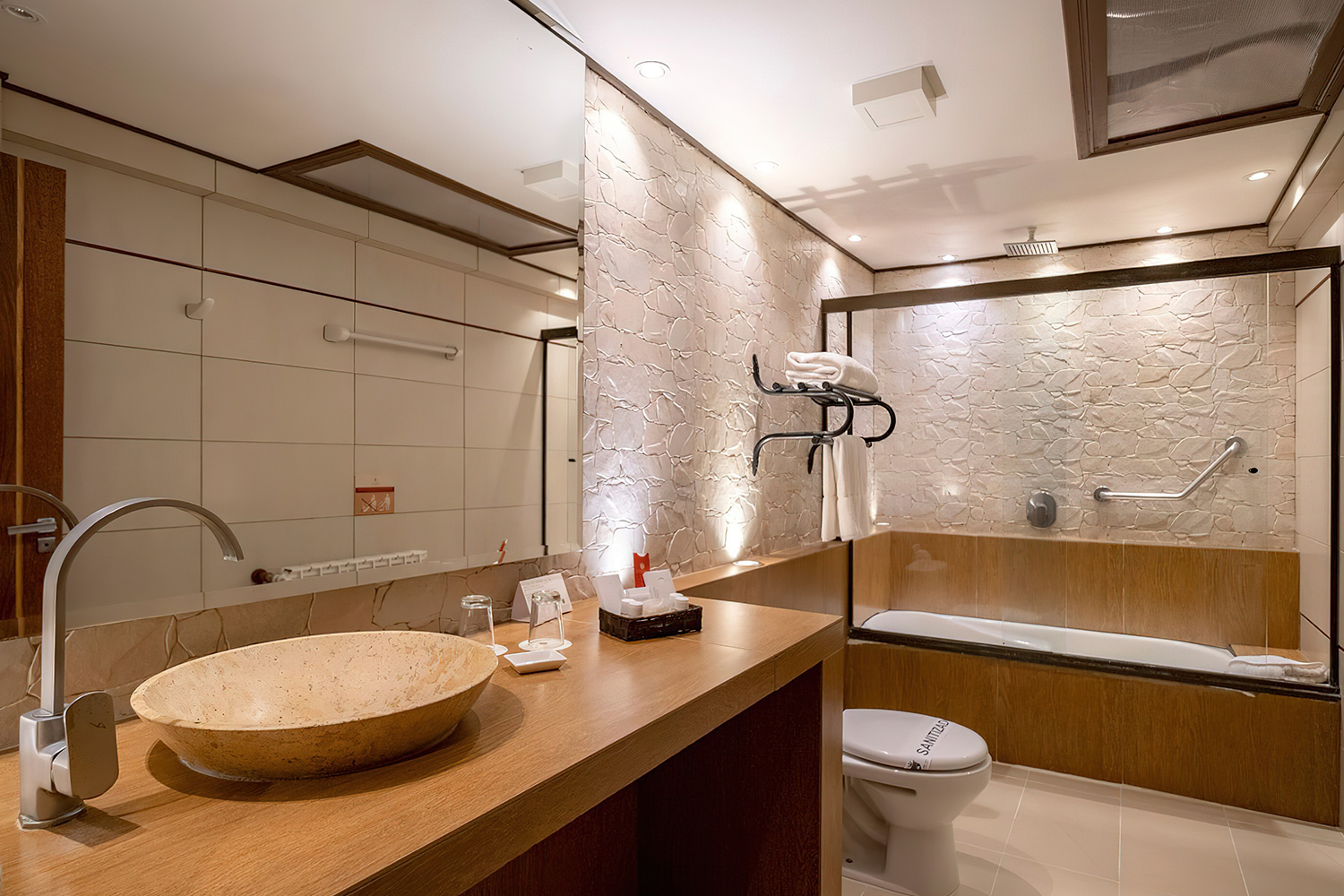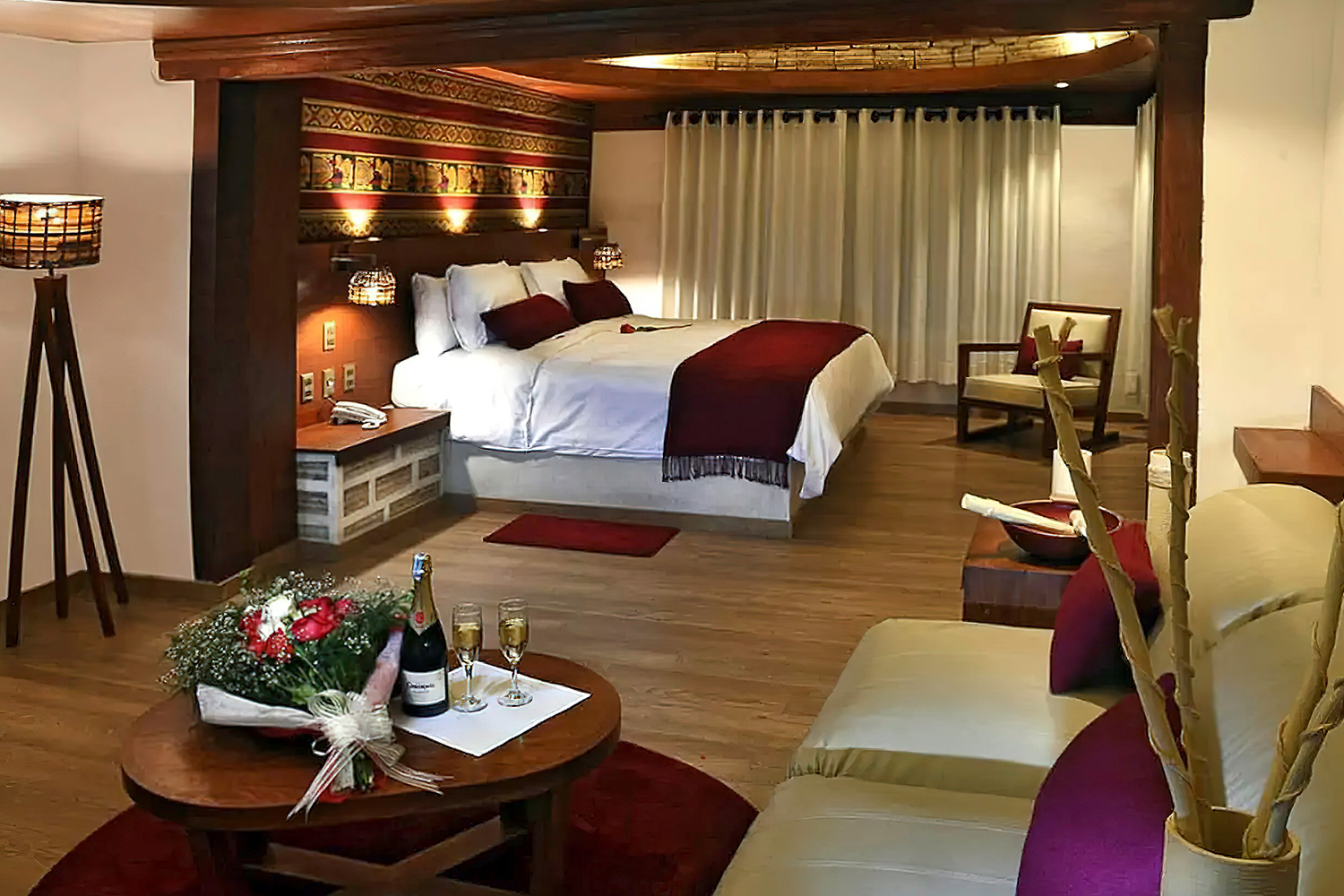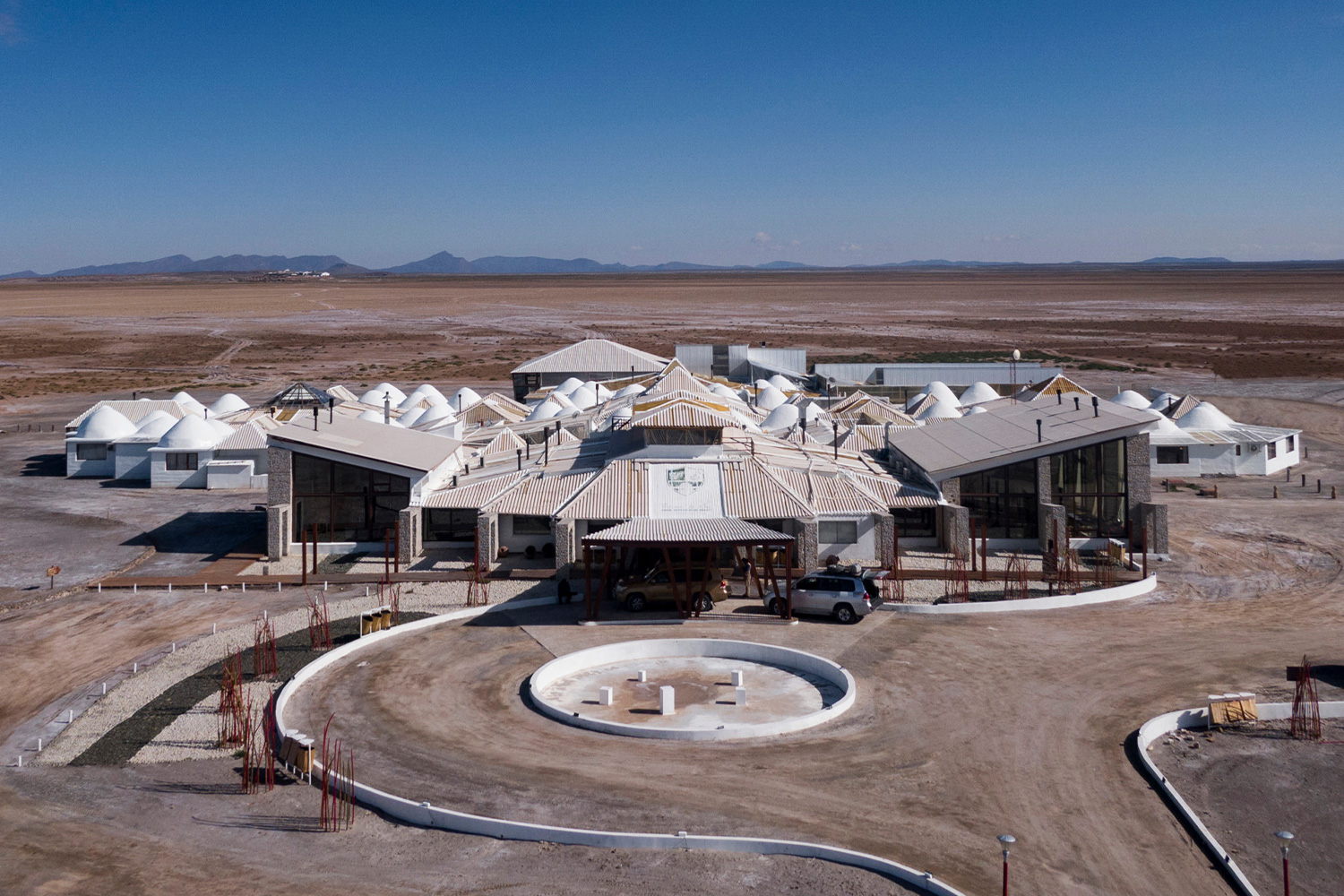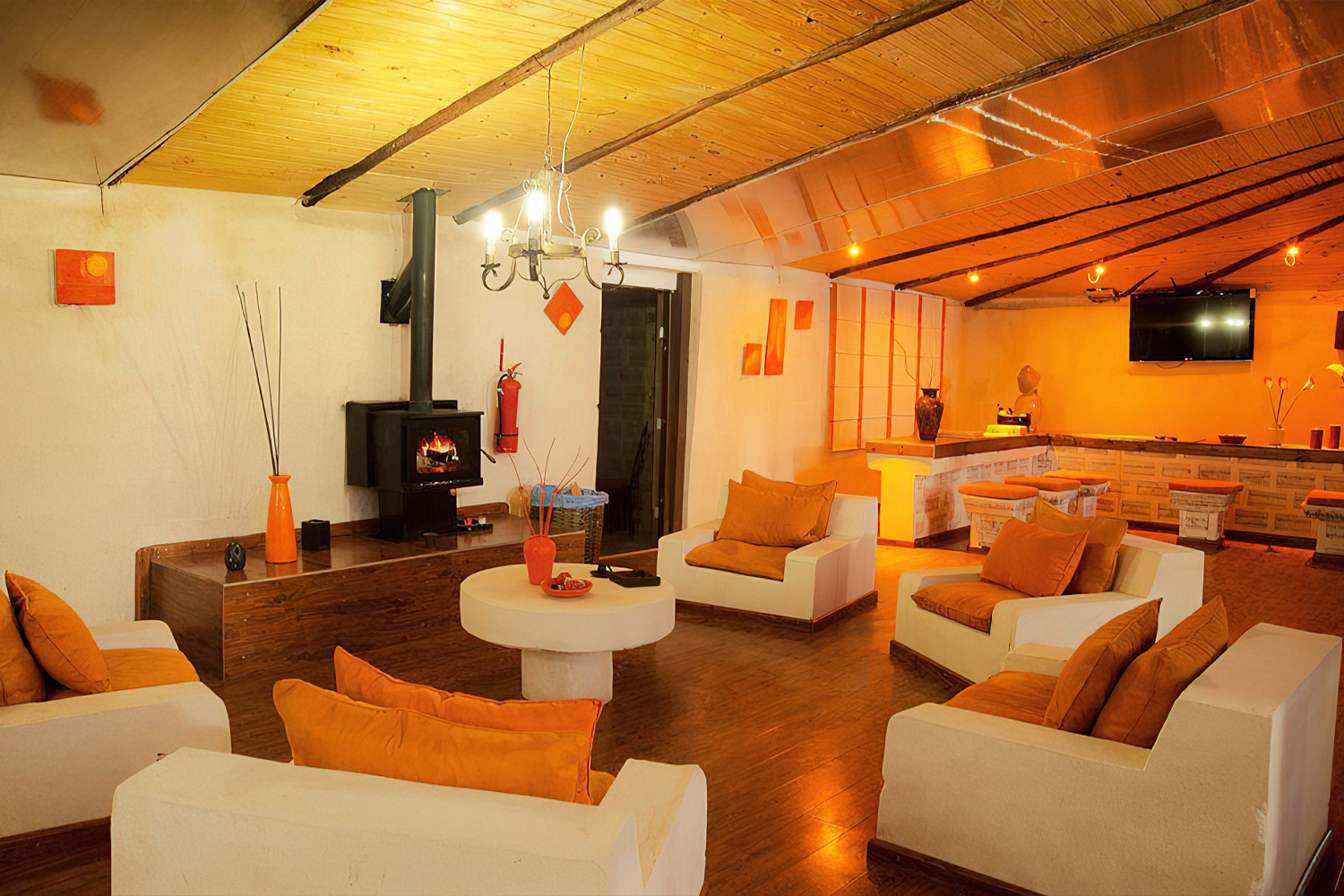盐宫酒店
Hotel Palacio de Sal
palaciodesal.com.bo
多年来,从玻利维亚首都拉巴斯La Paz前往乌尤尼盐沼,仅车程就需10个小时。苦于建材稀缺且交通不便,乌尤尼盐沼附一直没有酒店,直到一个男人出现。
胡安・克萨达・瓦尔达Juan Quesada Valda出生于1957年,1997年曾任玻利维亚旅游部副部长。有一次,30岁出头的胡安独自骑自行车进入乌尤尼盐沼,结果被困在里面。第二天清晨,胡安看到一群驼队载着盐块从他面前经过,立刻想到,为什么不用盐块在盐沼里建个酒店呢?
1999年,胡安在乌尤尼盐沼中部的盐壳上建造了世界第一座盐旅店。旅店仅有12间双人房,一间餐厅,一间公共浴室。墙体,床和桌椅都是盐砖,直接从乌尤尼盐沼取材。由于盐砖受潮和环境污染,旅馆在2002年不得不拆除。
胡安没有泄气, 两年后的2004年,胡安总结全部经验教训,在乌尤尼盐沼东边的新位置重新建成了一座酒店,这就是独一无二的盐宫酒店Palacio de Sal。
盐宫占地面积4500平方米,若从空中俯瞰,这座盐建筑呈现出一个巨大的安第斯十字Andean Cross ,致敬玻利维亚原生宗教文化。
为建成这座42间客房的酒店,胡安用了足足100多万块35 厘米长的自制盐砖,全部从乌尤尼盐沼表面直接取材,再通过一种盐胶混合粘结剂组装在一起。
随着乌尤尼盐沼的名声越来越大,世界各地的旅行达人不远万里赶来,相遇在盐宫。为了抑制客人兴奋过度,酒店甚至制定了一条规定:“禁止舔墙,违者罚款”
大堂颇有宫殿气势,晶莹剔透的盐砖柱撑起高大空间,灯光从盐墙表面折射银色的光芒。
42间盐屋客房别开生面,从“不让舔”的盐块墙壁到趣味横生的盐屋浴室,从沙沙作响的粗盐地板,到盐砖垒出的气势磅礴的圆顶天花,每个体验都叫人大开眼界。
盐宫的健身水疗中心,既有室内泳池又有私人理疗间,配备先进SPA设施,在如此偏远的盐沼中享受放松,确实非常惬意。
作为面向世界客人的特色酒店,盐宫的艺术元素彰显地域文化,由当地艺术工匠创作的盐雕作品被请入酒店陈列。餐厅壁画讲述了当地古老传说,一位战士的妻子用混有眼泪的母乳给刚出生的孩子喂奶,神将伟大的母乳变成了乌尤尼盐沼。
遥远的玻利维亚因乌尤尼盐沼引发旅游热潮,然而这片一万多平方公里的巨大盐沼又岂止是一面“天镜”。
资料显示,玻利维亚乌尤尼地区拥有2100万吨金属锂储量,占全球锂金属8900万吨储量的四分之一,而且乌尤尼盐沼的锂矿品位高达0.3,0.2以上即属优质品位。玻利维亚政府已明确表示,乌尤尼盐沼是玻利维亚旅游业的支柱性资源,不能因开采锂矿受到损害,必须严格遵守环保标准。
盐宫酒店陪在天镜旁边,每年雨季过后需要替换受潮的盐块结构,大约占到10,也就是10万块左右。为此,盐宫与当地盐块加工商达成合作,成为当地旅游循环经济的功臣。在盐宫带动下,附近也正在出现新的盐酒店,盐餐厅和盐制精品小店,盐沼旅游圈经济正在逐渐形成。
在乌尤尼盐沼,上帝似乎为玻利维亚打开了两扇窗,一个是以盐宫酒店为代表的旅游业,一个是锂矿业。但愿盐宫和她的祖国一起越来越好。
For many years, the journey from La Paz, the capital of Bolivia, to the Salar de Uyuni required a 10hour drive. Due to the scarcity of building materials and inconvenient transportation, there has never been a hotel near the Salar de Uyuni until a man appeared.
Juan Quesada Valda was born in 1957 and served as the Deputy Minister of Tourism of Bolivia in 1997. Once, in his early thirties, Juan rode a bicycle into the Salar de Uyuni alone and got trapped. The next morning, Juan saw a camel team carrying salt blocks passing in front of him and immediately thought, why not build a hotel in the salt flat using salt blocks
In 1999, Juan built the world‘s first salt hotel on the salt crust in the middle of the Salar de Uyuni. The hotel only had 12 double rooms, a restaurant, and a public bathroom. The walls, beds, and tables and chairs were all made of salt bricks, sourced directly from the Salar de Uyuni. Due to the salt bricks being affected by humidity and environmental pollution, the hotel had to be demolished in 2002.
Juan did not give up. Two years later, in 2004, Juan summarized all the experience and lessons learned and rebuilt a hotel in a new location on the east side of the Salar de Uyuni, which is the oneofakind Hotel Palacio de Sal.
The Palacio de Sal covers an area of 4500 square meters. If viewed from above, this salt building presents a huge Andean Cross, paying tribute to the indigenous religious culture of Bolivia.
To build this hotel with 42 rooms, Juan used a full 1 million homemade salt bricks, each 35 centimeters long, all sourced directly from the surface of the Salar de Uyuni, and then assembled together with a special salt glue mixed with a binder.
With the increasing fame of the Salar de Uyuni, travel enthusiasts from all over the world come from afar to meet at Palacio de Sal. To curb the excitement of the guests, the hotel even made a rule: ”No licking the walls, violators will be fined”
The lobby is quite palatial, with crystalclear salt brick pillars supporting a large space, and the light refracts a silver glow from the surface of the salt walls.
The 42 salt rooms are unique, from the ”no licking” salt block walls to the fun salt room bathrooms, from the rustling coarse salt floors to the majestic domes made of salt bricks, each experience is eyeopening.
The fitness spa center of Palacio de Sal has both an indoor pool and private therapy rooms, equipped with advanced SPA facilities, enjoying relaxation in such a remote salt marsh is indeed very pleasant.
As a very unique hotel facing global guests, the artistic elements of Palacio de Sal highlight the regional culture, and salt sculptures created by local artisan craftsmen have been invited into the hotel for display. The murals in the restaurant tell the local ancient legend that a warrior‘s wife nursed her newborn child with milk mixed with tears, and the gods turned the great milk into the Salar de Uyuni.
The distant Bolivia has sparked a tourism boom due to the Salar de Uyuni, but this huge salt flat of more than 10,000 square kilometers is more than just a ”mirror of the sky”.
Data shows that the Uyuni area in Bolivia has 21 million tons of metallic lithium reserves, accounting for a quarter of the global lithium metal reserves of 89 million tons, and the lithium ore grade of the Uyuni salt flat is as high as 0.3, which is considered high quality above 0.2. The Bolivian government has made it clear that the Salar de Uyuni is a pillar resource of Bolivia‘s tourism industry and must not be damaged by lithium mining, and must strictly comply with environmental protection standards.
Palacio de Sal is next to the ”sky mirror”, and after the rainy season each year, it needs to replace the damp salt block structures, which account for about 10, or about 100,000 blocks. To this end, Palacio de Sal has reached a cooperation with local salt block processors, becoming a contributor to the local tourism circular economy. Driven by Palacio de Sal, new salt hotels, salt restaurants, and salt boutique shops are also emerging nearby, and the salt flat tourism circle economy is gradually taking shape.
In the Salar de Uyuni, it seems that God has opened two windows for Bolivia, one is the tourism industry represented by Palacio de Sal, and the other is the lithium mining industry. May Palacio de Sal and her motherland get better and better together.





